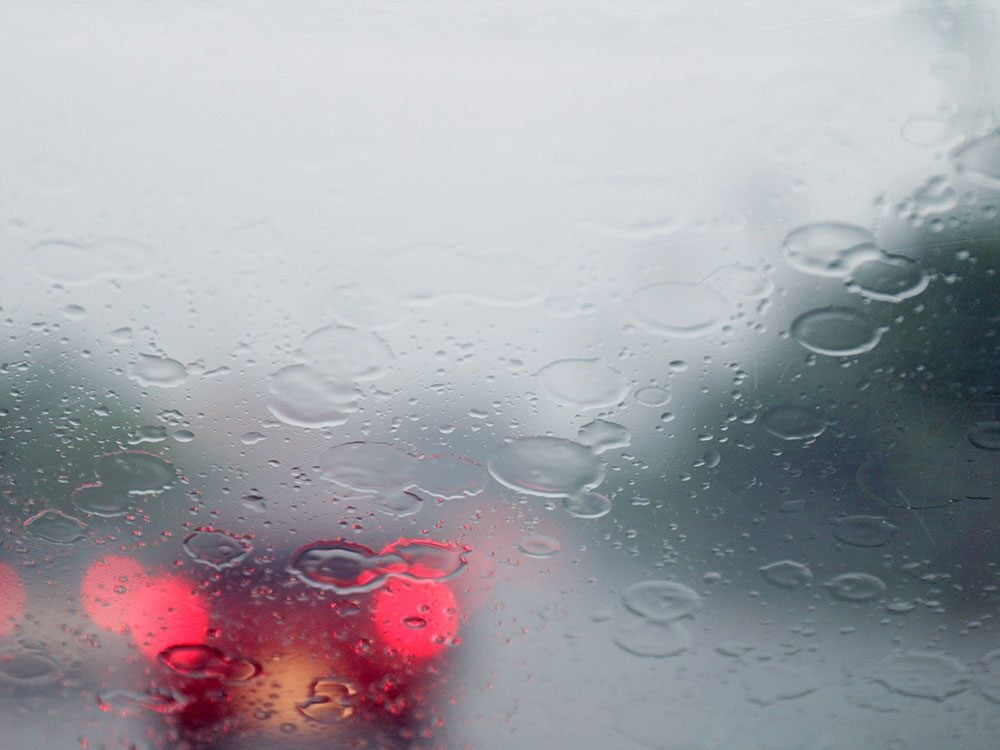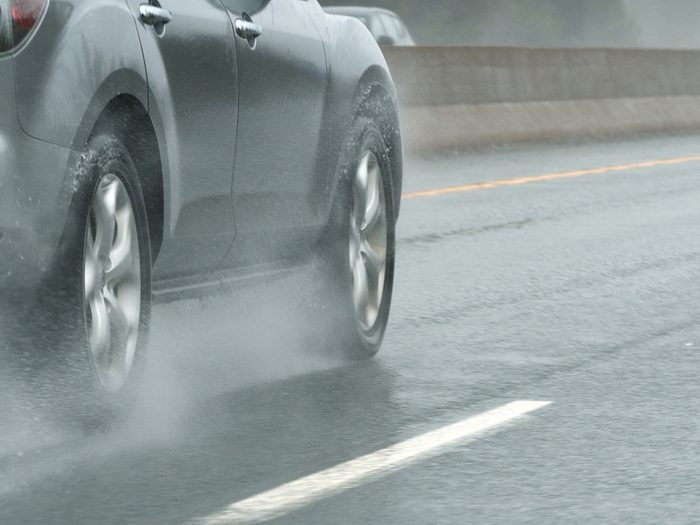
Driving in the rain? Follow these tips for safe driving in wet weather
This should go without saying, but reducing your speed—as long as you continue to keep with the flow of traffic, of course—is imperative when driving in the rain. After all, between the downpour and spray from other vehicles, heavy rain reduces visibility in all directions, and you need more time to react.

Keep your distance
Driving in the rain can be hazardous, and if ever there is an incident that requires you—or the driver in front you—to brake unexpectedly, you’ll want to have ample stopping distance on wet roads.
Here’s what to do if your car shakes when braking.

Avoid heavy braking
While driving in the rain, you may find yourself in situations—whether you’re hydroplaning or finding yourself in a skid—that will tempt you to hit the brakes abruptly. Do your best to curb that impulse. Brakes can be affected greatly by water, losing a bit of their power when wet, which can be disastrous in an emergency. Easing off the brakes, slowing down and maintaining control of your vehicle is your best bet.
Find out what it could mean if your brakes are squeaking.

Keep both hands on the wheel
Control is of utmost importance when driving in the rain. After all, you need to be in command of your vehicle should an incident occur, and having both hands on the wheel while driving in the rain (no snacking or fiddling with the radio!) will ensure you can get out of a sticky situation quickly and efficiently.
Here are more things you’re doing in your car—but shouldn’t.

Keep windows from fogging up
When driving in rain, windows tend to fog up as a result of the difference in temperatures inside and outside the car and can lead to decreased visibility. To stay safe and avoid accidents, simply press your car’s defrost button to clear-up the window. Turn on your A/C or roll down the windows by a couple of centimetres to remove the humidity from the vehicle and lower the temperature inside the car. If the issue persists, you may want to purchase a windshield cleaner and defogger. You can also try this genius hack to keep your windows from fogging up.

Beware of hydroplaning
Hydroplaning happens when your car travels above the water without touching the ground. Given that a driver is left with little-to-no grip with the road and, thus, less control, this can be a dangerous set of circumstances. If you find yourself in such a situation, stay calm, ease off the brakes and do not turn your steering wheel; let your car slow down and the tires reattach to the road surface.
If your car starts sinking underwater, here’s how to save your own life.

Avoid puddles
As a driver, you can never be sure exactly how deep a puddle is. Drive around it if you can, to keep water from getting into the car’s electrical system. (Here are tips for fixing an automotive short circuit.) If you do end up driving through a puddle, slow down before going through and tap your brakes lightly to get rid of water from your rotors once you are through.

Ensure windshield wipers are in working order
Windshield wipers should always be in working condition. Be vigilant about replacing them once per year, or whenever they start to leave streaks on the glass. Having wipers blades in tip-top shape ensures the best possible visibility when driving in the rain.

Stay home if you can
If you have no choice but to head outside during a heavy downpour, be sure to follow these driving tips. However, if you don’t have anywhere pressing to be, consider staying home and waiting it out until the storm subsides.
Make sure you never do this during severe weather.

Keep your headlights on
With wet weather often comes fog and overall gloominess. With your surroundings slightly darkened, turning on your headlights ensures that you can see the road in front of you, and that other drivers can see you.
Now that you’ve got these tips for driving in the rain under your belt, check out our ultimate roadside emergency guide.